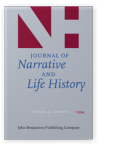Vol. 4:3 (1994) ► pp.193–213
Power, "Text," and the Representation of Historical Consciousness in the Autobiography of Assefa Woldegebriel
Abstract This autobiography of Assefa Woldegebriel, an Ethiopian intellectual who experienced the upheaval of the 1970s, considers how analysis and description of presentations of self can be reconciled with more standard historical texts. Autobiographical narrative is used here to pose questions about representation in historical accounts, the representation of historical consciousness, and the analytical categories that are applied to informants. In standard uses of this material, there are several tacit assumptions made about the structure of the subject. These assumptions involve the application of analytical concepts, including "person," "self," "agent," and "consciousness." This is a personcentered account about the nature of power in different kinds of texts dealing with the same time period. Educated Ethiopians of all ethnicities and nationalities played important parts in pre- and postrevolutionary society. Ethnicity, class, national identity, and education combined in contradictory ways to stamp their experience with significance. In this study, materials from secondary sources are woven into interview material to provide a cultural account of life in Ethiopia during the late 1960s and 1970s. (Anthropology; Oral History—Theoretical Issues; Ethiopia)
